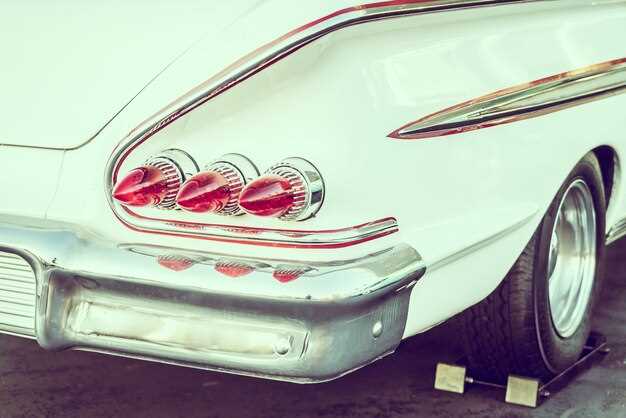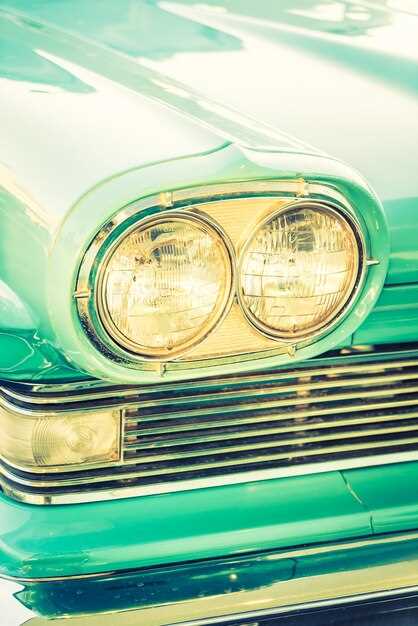
As the collector car market continues to evolve, 2024 presents a unique opportunity for investors to capitalize on classic automobiles that not only hold sentimental value but also promise potential financial returns. Investing in classic cars has transcended mere hobbyism, transforming into a strategic portfolio asset that combines passion with profitability. Understanding which vehicles are poised to appreciate in value is key for both novice and seasoned investors.
This year, several classic cars have emerged as standout options, driven by factors such as rarity, condition, and historical significance. Factors like market trends, auction results, and expert appraisals play crucial roles in identifying the best investment candidates. Vehicles that exemplify unique design, engineering innovation, and cultural impact are particularly attractive to collectors and investors alike.
In this article, we will explore the top classic cars to consider for investment in 2024, focusing on those that are not only iconic but also have shown resilience in the market. From legendary sports cars to elegant vintage sedans, these vehicles represent some of the finest opportunities for growth in the classic car arena, making them worth considering for anyone looking to diversify their investment portfolio.
Top Classic Car Models with High Appreciation Potential

Investing in classic cars can yield significant returns, especially when focusing on models known for their historical significance, rarity, and desirability. Here are some classic car models that have shown consistent appreciation potential and are expected to continue their upward trend in 2024.
First on the list is the 1961 Ferrari 250 GT California Spyder. Renowned for its stunning design and limited production, this model has become an icon. With only a handful manufactured, its remarkable auction sales highlight its desirability among collectors, making it a prime investment.
Another noteworthy model is the 1971 Porsche 911E. As one of the entries in the legendary 911 lineup, the 911E combines classic styling with modern performance. Its increasing appreciation can be attributed to the growing demand for air-cooled Porsches, particularly those from the early years of the 911 series.
Consider the 1970 Dodge Charger R/T, a true muscle car that encapsulates the essence of American automotive culture. The Charger’s association with popular media and classic car enthusiasts ensures its investment value rises, especially for well-preserved examples with original features.
The 1988 BMW M3 (E30) continues to gain traction among collectors. Celebrated for its driving dynamics and motorsport pedigree, the E30 M3 is increasingly acknowledged as a classic that promises appreciation. Its limited production runs and iconic status in automotive culture further bolster its investment potential.
Lastly, the 1969 Chevrolet Camaro Z/28 deserves attention. Known for its powerful performance and classic American styling, the Z/28 remains a sought-after model. As the interest in vintage muscle cars continues to rise, the Z/28 is poised for impressive appreciation, particularly rare variants and well-maintained examples.
Each of these models not only showcases automotive history but also reflects a strong investment outlook. As the classic car market evolves, awareness of these high-potential models can inform savvy investment decisions for collectors and enthusiasts alike.
Factors Influencing Classic Car Value in 2024

As the classic car market continues to evolve, numerous factors play a crucial role in determining the value of classic cars in 2024. Understanding these factors is essential for potential investors and enthusiasts alike.
One of the primary influences on classic car value is rarity. Limited production models or vehicles that were discontinued after a short run often command higher prices due to their scarcity. Collectors seek out these unique examples, driving demand and value upward.
Condition remains a significant factor in valuation. Cars that have been meticulously restored or maintained retain their value better than those showing signs of wear and tear. Originality also plays a critical role; cars that feature original parts and finishes are often valued higher than those with extensive modifications.
The historical significance of a vehicle can greatly affect its market value. Cars associated with prominent figures, historical events, or significant automotive milestones tend to attract greater interest from collectors. This historical context adds a narrative element that enhances appeal and worth.
Market trends, including consumer preferences and economic conditions, also influence pricing. In 2024, there is a growing interest in electric and hybrid classic cars, which may affect the desirability of traditional gas-powered models. Keeping an eye on industry trends is essential for gauging future value.
Documentation and provenance are crucial in establishing a classic car’s worth. Comprehensive records, including service history, ownership lineage, and restoration details, bolster a car’s credibility and can increase its market value. Buyers are more inclined to invest in vehicles with traceable histories.
Finally, regional demand can significantly affect value. Certain classic car models may be more sought after in specific regions, creating localized price variations. Understanding these regional dynamics can better inform investment decisions.
In summary, the valuation of classic cars in 2024 is influenced by a combination of rarity, condition, historical significance, market trends, documentation, and regional demand. Recognizing these factors will help investors make informed choices in the evolving classic car market.
How to Assess the Condition and Authenticity of Classic Cars
Evaluating a classic car’s condition and authenticity is essential for making an informed investment. This process requires a detailed inspection and knowledge about the specific model. Here are the key steps to follow:
- Visual Inspection
- Exterior: Check for rust, dents, and paint quality. Look for mismatched paint colors, which may indicate repairs.
- Interior: Assess upholstery, dashboard, and controls. Original materials add to authenticity.
- Chassis and Undercarriage: Inspect for rust and structural integrity. A healthy chassis is crucial for value.
- Mechanical Evaluation
- Engine: Listen for abnormal noises. Check for leaks and inspect the condition of hoses and belts.
- Transmission: Test for smooth shifting. Any hesitation or grinding can indicate problems.
- Brakes and Suspension: Examine brake pads, rotors, and suspension components for wear.
- Documentation Review
- VIN Check: Ensure the Vehicle Identification Number matches the car’s papers and that it is not fraudulent.
- Service Records: Request maintenance history to confirm regular service and any major repairs.
- Title Status: Verify if the title is clean and free of liens, which can complicate ownership.
- Authenticity Verification
- Original Parts: Investigate which parts are original and which have been replaced. Original components enhance value.
- Restoration Quality: If the car has been restored, assess the quality of the work. Documentation of the restoration process is beneficial.
- Expert Appraisal: Consider hiring a classic car expert for a thorough inspection and assessment.
- Market Research
- Comparative Analysis: Research similar models to understand market trends and pricing. This helps gauge if a car is fairly priced.
- Historical Significance: Assess the car’s model popularity, production numbers, and any notable history related to it which impacts value.
By carefully following these steps, potential investors can better assess the condition and authenticity of classic cars, ultimately making well-informed purchasing decisions.
